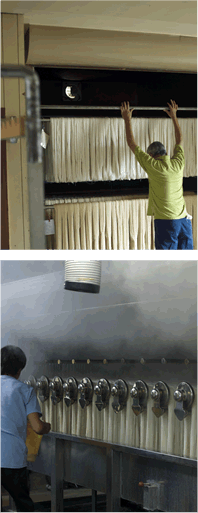


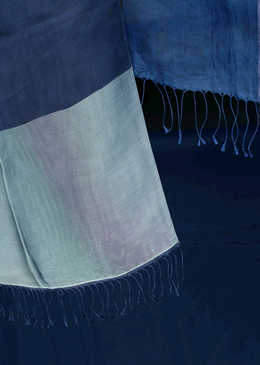
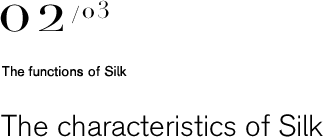
1. The soft luster and texture
The degumming process would remove Sericin from Fibroin, leaving an irregular surface full of thin triangular cross-sections. The prism-like cross-sections allow complex reflection of light on the silk surface and result in the unique soft luster.
In addition, the thin but strong silk fiber provides extra tensile strength and warmth to the silk fabrics. Its soft and smooth texture makes silk unmatched by any other fiber.
2. UV-shield effect
Amino acids in the silk proteins would reduce harmful ultraviolet rays. It is the ability that the silkworms mastered to survive and protect them from the harsh environment especially during metamorphosis. Therefore, the silk fabrics could protect human skin from UV light.
3. Anti-Odor effect
It can inhibit the growth of micro-bacteria and retain the normal condition of skin, resulting in an Anti-Odor effect of silk-products.
It could absorb 1.3 to 1.5 times more water and release moist 1.5 times faster than cotton, moisture trapped in the silk fabric could be quickly wicked away. Sweat perspired from the body would be easily absorbed and released outside, so it could leave you feeling dry and comfortable even at summer time. Human beings are said to give out 2 liters of sweat a day, so it is important to choose some clothes that could allow ventilation for a good hygiene and comfort.
5. Warm Keeping effect
There are plenty of air spaces between the fibers even in a thin layer of silk. It could trap body heat easily and keep you warm. Silk could help you stay away from catching a cold in winter because it can keep you warm and can wick away extra sweat moisture.
6. Skin beauty effect
The natural moisturizing effect could protect skin from dryness. The natural features of silk have been encouraging producers to use silk in apparels and even in cosmetic and medical areas.
7. Gentle to Skin
The protein-rich composition is less likely to cause irritation or allergy to human, so the silk-products could also be consumed by customers with sensitive skin. Besides, it can get rid of the unpleasant feeling of static electricity on the clothes because silk has a high hygroscopicity. It can also keep off dust and dirt to avoid asthma and allergies.
8. Safety (Flame resistant)
Silk is usually considered weak and delicate because of its thin yarns. However, the tensile strength of silk is in fact stronger than cotton and wool. Besides, silk is nonflammable that it would not melt or burn under 300 degree. Therefore, it is less likely to cause severe burns unlike the chemical fibers which would melt on body with flame.
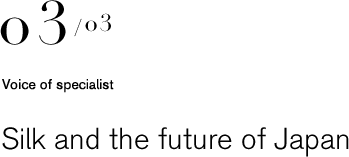
Takayuki Nagashima (長島孝行)
Representative of the New Silk Road Project
Standing Council Committee of the Japanese Society for Wild Silkmoths
Director of the Japan Millenary Sustainability Club, etc.
Advocate of Insect Technology
Silk as a resource
It is a big mistake to think “Silk = Silkworm”. There are more than 100 thousand kinds of animals that can produce silk. Although silk is normally known as silkworm silk in Japan, we find nearly every kind of moth and butterfly in the world could produce silk. Moth build cocoon, and butterfly spit out scaffolding thread during metamorphosis. Some kind of butterfly can also produce big cocoon. Cocoon varies not only in size but also in color. Golden, silvery and coppery cocoon can also be found. In addition, some species of Coleoptera, cockroach, spider and even shell could produce silk as well.
It is a big mistake to think “Silk = fiber”, because almost 92% of the mass of Silk is made up of proteins. Some researchers and manufacturers have already started to take the perspective of “Silk = Protein” in their studies. It was discovered that some functionalities of silk proteins are amazingly useful for human beings. Fibroin, the main component protein of silk yarn, is particularly the focus of researches due to its biocompatible, antibacterial, UV shielding and indigestible features. Some researches even suggested that Fibroin could be transformed to powdered protein or biodegradable plastics through the latest processing technology.
From this point of view, silk can possibly be the “Unlimited resource” on the earth.
As mentioned above, there are more than 100 thousands of species of silk with different functionality and nanostructure. The researches of silk and mulberry tree in Japan are the best in the world. The top class Japanese technology has contributed a lot to the current sericulture industry, but it is so strange that the industry is disappearing in Japan. Please think about it. The self-sufficiency rate of food in Japan is 40% on a calorie basis (66% on production value basis), and how about the self-sufficiency rate of clothes? It is almost 0%. Although Japan is a country with limited resources, don’t you think the self-sufficiency rate of clothes is too low to be healthy and sustainable? I think we have to see silk from a different point of view (for example from the perspective of functionality or nanostructure). We also have to stop the stereotype that mulberry tree is only the food of silkworm. With these goals in my mind, I launched the “New Silk Road Project” few years ago. In other words, it is the “Beginning of the second sericulture industry”
World-class Monozukuri
The Japanese Monozukuri (Manufacturing) is world-renowned for its sophisticated technology and excellent design. The production, dyeing and weaving of silk yarn in Japan have earned a high reputation as well. For instance, the products of Sankaseiren such as the 8 denier or the 5 denier yarn are having superior quality. At one time, Japan earned nearly half of the foreign currency by silk production. “Yokohama” is the symbol of the period. However, Japan can no longer rely on the model of mass production and mass export in the future. Instead, Japan should focus on producing high value-added products to the world. With latest Japanese technology, the functionalities of silk protein mentioned above could even be applied to non-fibrous products such as cosmetics and supplements. The new generation of Monozukuri will lead to a bright future of the Japanese silk industry. It is the traditional yet advanced Monozukuri that the world could not imitate. It is the Monozukuri with spiritual richness and of high expectation.
Evaluation of SHIDORI
Washing machine has become a necessity in modern family. However, there is a deep rooted impression that machine washing would damage silk fabrics and the yellowing of silk would occur easily. Therefore it is very difficult for producers to develop and commercialize silk products. However, the silkworm silk used by SHIDORI is not only machine-washable, the luster and texture of silk could be surprisingly and remarkably preserved even after many times of home laundry. This technological advancement would undoubtedly lead to a wider application of silk in commercial products. From now on, my researches together with the technical skills of Sankaseiren will produce a brand new silk that could benefit not only Japanese but also the whole human race.
